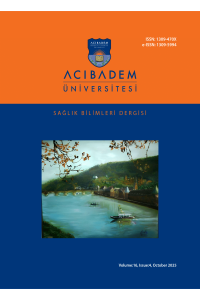Abstract
ABSTRACT
Purpose : Internal quality control (QC) is an essential component of ensuring reliability in laboratory operations, with risk planning becoming increasingly critical in recent times. While each test varies in terms of demand and workload, the frequency of internal QC must be carefully determined. Adopting a test specific QC plan, rather than a generalized approach, allows for early detection of potential issues unique to each test, enabling timely corrective actions. According to the CLSI EP23 guideline, every laboratory should establish a tailored QC plan for each test to enhance accuracy, mitigate risks, and improve overall quality management.
Methods : In our study, we aim to determine the maximum analytical CV values achievable by calculating Max E(Nuf) (the expected number of unreliable final results before the last accepted quality control) and maximum run size data. These calculations will be based on Rilibäk TEa (Total Allowable Error) targets and laboratory workflow frequency for Glucose and Sodium (Na) tests, using the QC Constellation program in accordance with the CLSI EP23 guideline.
Results : Analytical CV values determined before the max E(Nuf) value exceeded 1 were 2.13 and 0.58 for glucose and Na, respectively. When the CV value for glucose increased to 2.83 and 0.78 for Na, the RMI value exceeded 1, indicating that the QC scheme was no longer at a controllable level.
Conclusion : Each laboratory should develop a test specific quality control (QC) plan tailored to its unique workload and operational volume.
Ethical Statement
This study was approved by the Ethical Committee for Istanbul Health Sciences University Umraniye Training and Research Hospital, with the assigned decision no: 525 and date: 16.01.2025.
Project Number
525
References
- 1. CLSI C23-A. Laboratory Quality Control Based on Risk Management. Wayne, PA: Clinical and Laboratory Standards Institute; 2011.
- 2. Westgard JO. Basic QC Practices: Training in Statistical Quality Control for Medical Laboratories. 4th ed. Madison, WI: Westgard QC, Inc; 2016.
- 3. Parvin CA. Assessing the impact of the frequency of quality control testing on the quality of reported patient results. Clin Chem. 2008;54:2049-2054.
- 4. Bayat H, Westgard SA, Westgard JO. Planning risk-based SQC strategies: practical tools to support the new CLSI C24-4ed guidance. JALM. 2017;2: 211-221
- 5. Neufassung der “Richtlinie der Bundesärztekammer zur Qualitätssicherung labor medizinischer Untersuchungen – Rili- BÄK”. Dt Aerzteblatt 2014;111:A1583–618.
- 6. Çubukçu, Hikmet Can. «QC Constellation: a cutting-edge solution for risk and patient-based quality control in clinical laboratories» Clinical Chemistry and Laboratory Medicine (CCLM), vol. 62, no. 11, 2024, pp. 2185-2197. https://doi.org/10.1515/cclm-2024-0156 https://hikmetc-qcconstellation.streamlit.app/
- 7. Can Çubukçu H. Quality control frequency: Unleashing the truth. Clin Chim Acta. 2025 Feb 1;567:120068. doi: 10.1016/j. cca.2024.120068. Epub 2024 Dec 5. PMID: 39645017.
- 8. James O. Westgard, Hassan Bayat, Sten A. Westgard. Planning SQC strategies and adapting QC frequency for patient risk. Clinica Chimica Acta. Volume 523, 2021,Pages 1-5,ISSN 0009-8981,https:// doi.org/10.1016/j.cca.2021.08.028.
- 9. Bayat, Hassan. “Selecting multi-rule quality control procedures based on patient risk” Clinical Chemistry and Laboratory Medicine (CCLM), vol. 55, no. 11, 2017, pp. 1702-1708. https://doi. org/10.1515/cclm-2016-1077
- 10. Martín Yago, Silvia Alcover, Selecting Statistical Procedures for Quality Control Planning Based on Risk Management, Clinical Chemistry, Volume 62, Issue 7, 1 July 2016, Pages 959–965, https:// doi.org/10.1373/clinchem.2015.254094
Details
| Primary Language | English |
|---|---|
| Subjects | Analytical Biochemistry |
| Journal Section | Research Article |
| Authors | |
| Project Number | 525 |
| Early Pub Date | September 9, 2025 |
| Publication Date | October 1, 2025 |
| Submission Date | January 22, 2025 |
| Acceptance Date | June 21, 2025 |
| Published in Issue | Year 2025 Volume: 16 Issue: 4 |

